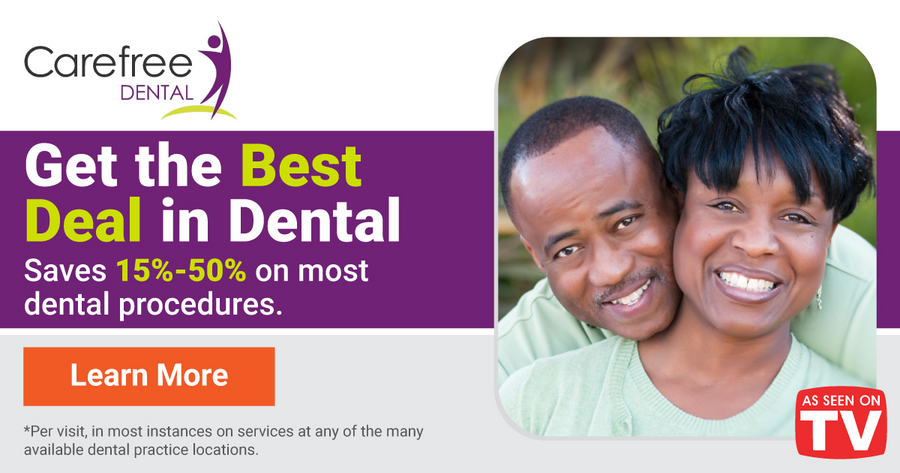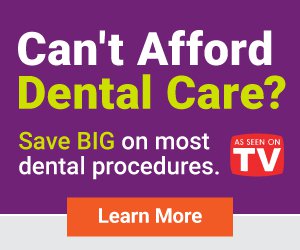What You Should Do in a Dental Emergency
The First Rule of a Dental Emergency: Remain Calm
Dental emergencies can be very stressful. Often, they’re also quite painful. When you’re experiencing a dental emergency, no matter how hard it is, you have to remain calm.
A clear, level-headed decision-making process when you’re experiencing a dental emergency is crucial. Most importantly, it can save your tooth.
Knowing what to do in a dental emergency can make all the difference. To save your teeth, you should follow these instructions when you need urgent dental care.
Where Should You For Dental Emergency Care?
Generally, there are two options for dental emergencies: go straight to the ER or visit an emergency care dentist.
Either way, you’ll have to take care of yourself (or your tooth) until you get there.
Figuring out what to do (especially if you’re in pain) can be challenging. Not every dental issue requires a visit to the ER. Sometimes, it may be wiser financially to see your usual dentist.
It’s crucial that you know the difference between non-emergency dental issues and problems that require urgent care. Here’s how to decide.
Non-Emergency Conditions
Although these aren’t urgent dental emergencies, you should still see a dentist about them sooner rather than later:
- Dull toothache
- Lost filling, bridge, or crown
- Broken or chipped tooth (unless you’re in severe pain)
- Objects caught between teeth
- Broken braces or wires
Urgent Dental Care Emergencies
If you experience any of the following dental emergencies, seek out an emergency dentist (or visit an emergency room) immediately:
- Injured jaw
- Painful swelling
- A permanent tooth that has been partially or fully knocked-out
- Severe toothache
- Tooth infection that leads to fever, severe pain, and swelling
What to Do in Specific Dental Emergencies
You’ll need to know how to take care of yourself until you go to the ER or see a dentist. But knowing what to do depends on your situation. And there are SEVERAL different kinds of dental emergencies. Here’s what you need to do in the most common dental emergencies.
Fully Knocked Out Tooth
If you still have the tooth, only hold it by the crown (the top part). Never touch the root of a knocked-out tooth. You’re going to need to clean the tooth.
Carefully rinse the tooth with water. Don’t remove any tissue fragment. Then, try to put the tooth back into its socket if you can. Make sure it’s facing the right way. But, don’t force it. If you can put it back in its socket, bite down, and keep it there until you get to a doctor.
If you can’t put the tooth back in easily, it’s best to leave it out. Put the tooth in a small container of milk, or a cup of water that contains a pinch of salt.
The highest chance of saving your tooth is seeing your dentist within one hour of it being knocked out. That’s why it’s crucial you seek medical attention right away.
Partially Knocked Out Tooth
An extruded tooth is still in danger. And you’ll likely need immediate attention to save it. Most importantly, you need to eave the tooth in its socket. Even if it feels like it’s about to come out.
You can take an over-the-counter pain reliever until you can see your dentist. Feel free to apply a cold compress to the outside of the mouth to help ease swelling and pain.
Broken or Chipped Tooth
If you can, save any pieces of the tooth. Next, wash the broken pieces if any, and rinse your mouth with warm water. You’ll want to apply gauze to the bleeding area until the bleeding stops (roughly 10 minutes).
Additionally, you should ice the area of the broken or chipped tooth on the outside of the mouth or cheek to relieve pain and swelling.
It’s best to see a dentist soon for these types of injuries, but you don’t need to rush to the ER necessarily.
Caring for a Toothache
Rinse your mouth thoroughly with warm water. If the cause of the pain is something lodged between your teeth, try to remove it with dental floss.
You can apply a cold pack to the outside of your cheek in case of swelling. But don’t put it against the gums near the aching tooth. Ice may actually burn the gum tissue if it comes into direct contact with your gums.
You can also take an over-the-counter painkiller to manage the pain.
Lost Crown or Filling
Losing a crown or a filling can be very uncomfortable. Usually, you don’t need to go to the ER with these types of dental emergencies. If you don’t need to (or can’t) see your dentist immediately, there are a few things you can do to handle the situation.
Try to place the crown back over the tooth. You can use an over-the-counter dental cement, a denture adhesive, or toothpaste to hold the crown in place until you see your dentist. If you have a lost dental filling, you can also use a piece of sugarless gum to temporarily hold it in place.
Sometimes losing a crown or filling can also be painful. To dull the pain a bit, you can apply clove oil or powder to the sensitive area with a cotton swab
Loose Brackets
Loose brackets can be dangerous. They can easily scratch your mouth. This dental emergency needs the immediate attention of your orthodontist.
You can use a small piece of orthodontic wax to temporarily reattach the loose bracket. You can also use wax to keep your braces from scratching your mouth. Place it over the bracket and make sure any protruding areas are covered with wax.
Food or Object Stuck in Your Teeth
Usually, you can resolve these types of dental problems yourself. Try to use dental floss to carefully remove food or the object stuck between your teeth. Be gentle, and don’t use a sharp object to poke at the object, as this could scratch your teeth and gums.
But, if you can’t remove whatever’s lodged between your teeth and it’s causing you pain, you should consider seeing a dentist.
Broken Braces or Wires
A broken wire in your brace can hurt the inside of your mouth. Go see a dentist as soon as possible if you’re experiencing this type of dental emergency.
Do not cut the wire yourself!
Try using the eraser end of the pencil to push the wire into a more comfortable position to prevent it from poking other parts of your mouth.
If you can’t reposition the wire, you can use a small cotton ball, orthodontic wax, or a piece of gauze to cover the end of the wire until you see your dentist.
Tooth Abscess
An abscessed tooth is an infection at the root of a tooth, usually caused by severe tooth decay. If left untreated, they can lead to damaged tissue and teeth. Worse case, the infection can spread to the lymph nodes and other parts of the body and put your health at risk.
It’s important that you see your dentist as soon as possible if you think you may have an abscessed tooth. In the meantime, rinse your mouth several times a day with a mild saltwater solution to ease the pain.
How to Contact an Emergency Dentist
Many dental practices have an emergency number that you can call if you are in urgent need of dental care when office hours are closed. If for some reason you are still unable to get in contact with your dentist, you should visit the ER in the event of a serious dental emergency.
How to Prevent Dental Emergencies
Of course, accidents will happen no matter how careful you are. Still, there a few ways that you can help prevent dental emergencies:
- Wear a mouthguard or face cage during high-intensity sports or activities.
- Stick to a healthy dental regimen.
- Visit your dentist regularly.
- Avoid foods that are hard on your teeth.
- Stop bad habits like chewing on pencils or fingernails.
How to Save Money on Dental Emergencies
You never know when a dental emergency could happen. That’s why it’s important to be prepared.
A visit to the dentist can cost quite a bit of money. And the last thing you want is to worry about the costs when you’re experiencing dental pain.
Rather than wait for a dental emergency, you need a way to save money at the dentist instantly. The Carefree Dental Card is an affordable alternative to dental insurance. As a member, you’ll save 15% - 50% in most instances on dental procedures. That’s more money in your pocket. And less stress about expensive dental appointments.
Enjoy amazing dental savings (and peace of mind) when you sign up for a Carefree Dental Card today!
The Carefree Dental blog is not meant to be a substitute for professional medical advice, diagnosis, or treatment. The text and pictures within the content are intended for information purposes only. Readers should consult with a licensed dentist or healthcare professional before seeking treatment.
The Carefree Dental Card is not insurance and Carefree Dental is not an insurance provider.





